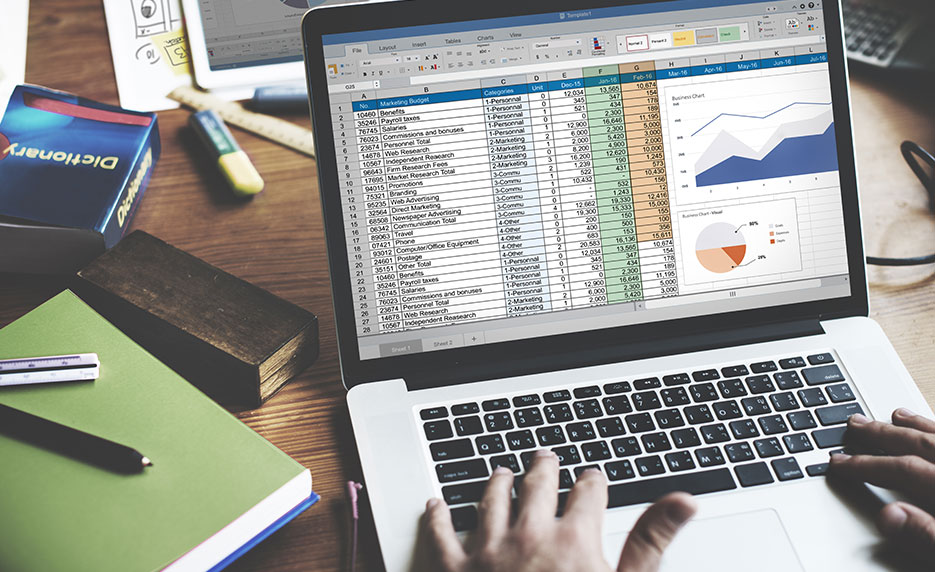Accounting Cycle:
Accounting
is the field of study which tells us about how to collect the economic figures,
evaluate and analyze them and record them
in a very respectable and professional
way to present to the business stakeholders and helps them to collect the
required information from the pool of business transactions. That is an art and
we also knows it with the name of book keeping.
As I write in the above paragraph accounting of business
financial transactions is an art of collection, evaluation, analyzing,
recording and presenting to the business management and stakeholders. That
complete process is based on some steps of activates which are commonly known
as accounting cycle.
That Accounting Cycle is consist of 7 different steps which are Source Data, Journal, Ledger, Trial
Balance, Adjustment, Closing Accountings and Stock Valuation and Preparation of
Final Accounts. Explanation regarding these steps or stages of accounting cycle
is as follows:
1.
Collection of
Information:
Collection of Information about
every business transaction from all the sources is the first step that is known
as information gathering or collection. All the Accruals and Non- Accruals base
transactions are important for business.
2.
Journal Entries Recording:
After collection of the transactions the business accountant clerks are
responsible to record them on the basis of their period, amount, under the
given heads of accounts to them. They must record the transactions with their
effects on the head of accounts like a transaction must be debit or credit transaction.
There are two different kinds of recording systems one is called double
entry system and the other one is known as single entry system. Double Entry
normally use by Corporation and general business organizations and the single
entry transactions use by Non-Profit organizations.
3.
General Ledger:
General Ledger actually helps the
Trial Balance and that tells us about the accounting entry type and its
purpose. That Separate the transaction
and helps us to make a pool of the similar transaction to count them under the
head of trial balance.
4.
Trial Balance:
Trial Balance helps us to collect all the same type of transaction under
debit and credit columns and count them. Be remember that at the end after the
calculations of both sides of debit and credit columns their balances must be
equals. Trial Balance helps the accountants to check and reconcile their bookkeeping
skills.
5.
Adjustment Entries:
Sometime the accountants they record the wrong figures or they receive or
issued the wrong amounts. That step Adjustment entries helps us to correct the
errors and also helps us to complete the transactions in a very integrated way
of bookkeeping.
That’s the reason the adjusted trial balance always be the part of
accounting and all the adjustments and accounting entries which needs some corrections are the part of
it after correction with their adjusted amounts of figures.
6.
Closing Account
& Stock Evaluation:
When the accountants are free from the adjustment entries and they are
moving to the next step which is known as closing account and stock evaluation.
At this step they need proper correct information about their stock levels,
equities and personal capital to make the final closing entries at the end of
the business accounting period.
7.
Preparation of Final
Account:
Preparation of financials is the
last step in which we prepare the financials for the auditors, investors and business
top leadership or owners . Statement of Profit and Loss, Balance Sheep, Cash Flows Statement and Statement of Equity
are the part of final accounts.
That are the commonly known steps of accounting cycle and
every accountant knows them and trying to perform his duties according to them
in the given standards by IFRS, IAS and GAAP.

Very nice post and thanks for it .I always like and such a super contents of these post.Excellent and very cool idea and great content of different kinds of the valuable information's.
ReplyDeleteHome Tutors in Delhi | Home Tuition services
Accounting is the backbone of the business financial world. Thanks for your accounting blog its very informative.. It help me a lot.
ReplyDeleteBookkeeping For Self Employed Spreadsheet
Excellent post and thanks a lot for sharing this kind of information Thank you so much for posting this important information.
ReplyDeletebookkeeping services in London
Thank you to much informative
ReplyDelete